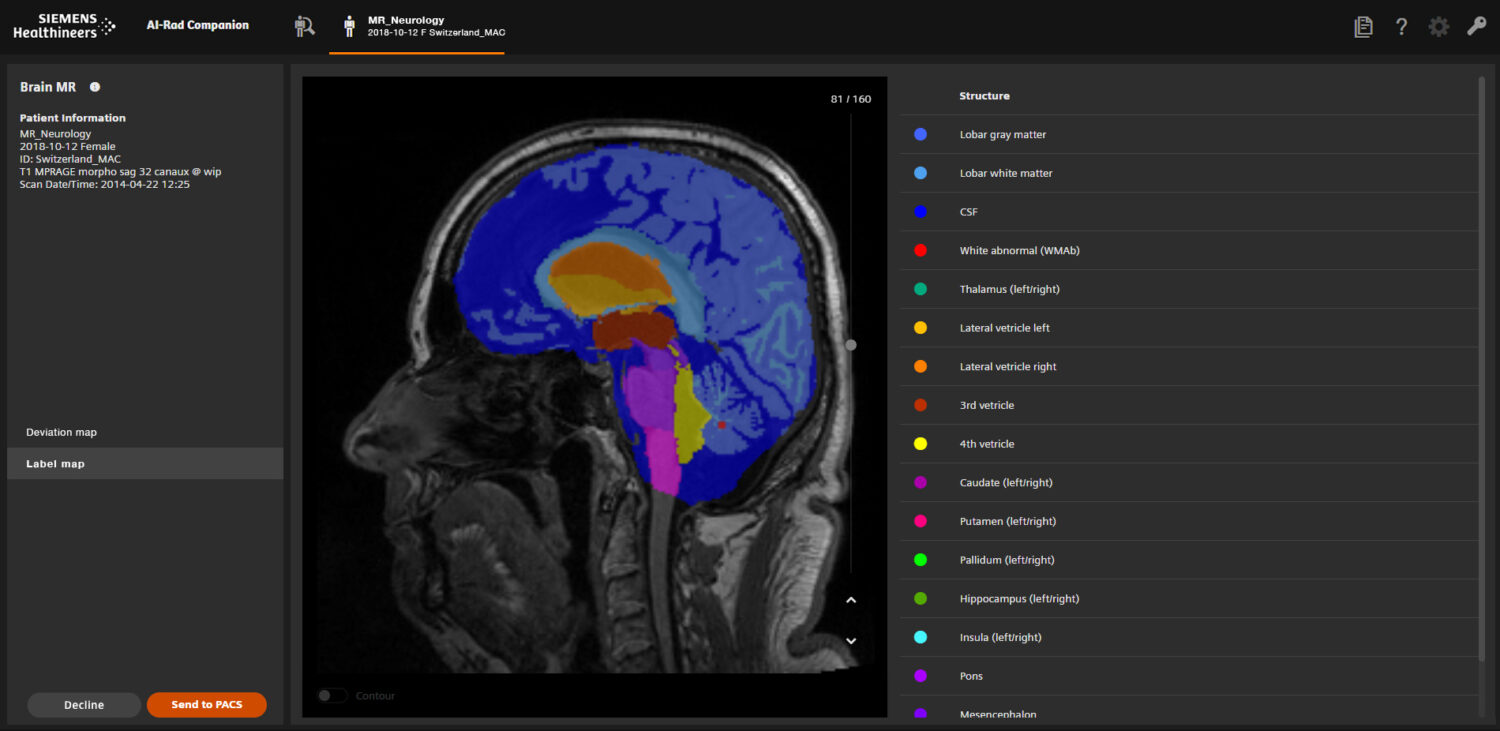Siemens Healthineers
The Intelligent Companion for Radiologists
Siemens Healthineers is one of the world’s leading medical technology companies and offers innovative products and services for numerous areas in healthcare. In the field of multimodal imaging, Siemens Healthineers provides an AI-driven, cloud-based application that helps radiologists with decision making: the AI-Rad Companion.
Radiologists and radio-oncologists are required to evaluate an immense number of images every day, for which there is usually little time due to their ever increasing workload. The AI-Rad Companion supports its users in reviewing images and identifying radiological abnormalities. Deep learning algorithms automatically post process image data sets, for example, by labelling anatomies and comparing the results with reference values. As a result, users are supported with routine, repetitive tasks and high caseloads.
Industry
Expertise
UX Research
UX Design
Deliverables
Formative Testing
(Wo)manpower
Ariane JägerCathryn Mc Anespy
Cornelia Lüderitz
Time
Building Confidence in AI
The AI-Rad Companion represents a family of products that provide solutions (also called extensions) for different modalities and anatomical regions. To ensure a consistent design across all extensions, UseTree was brought in to develop four applications Brain MR, Prostate MR, Chest X-ray and Organs RT.
Mockups and prototypes of the applications were provided as a basis, as was the Siemens style guide documenting the higher level product family. Our task was to ensure FDA compliant product development across different product teams, including UX Research and Testing, UX Design and UX Consulting. Our focus was on creating a transparent and understandable interaction between the doctor and this new innovative technology, building trust in AI-based applications and making the added value recognisable.
Combining Innovation with Regulatory Requirements
At the start of the project, the focus was on an intensive examination of the context of use. The project teams identified user-centred requirements and initial risks as well as usability problems in workshops, interviews, expert reviews and task analyses. The design team developed the solutions step by step in four iterations.
Formative and Summative testing of each iteration was carried out by the research team – with the aim of minimising risks until the end result is a product for doctors. Another part of risk management consisted of testing the user manual. Each individual step and all changes resulting from the tests were documented by the research team, in detail, in the usability file.
Intelligent Support for Doctors
At the end of the project, the AI-Rad Companion welcomed four new product members that are already available in many countries. The design consistently fits into the Siemens product family, as well as, fulfilling the specific requirements of each extension. The transparent and minimalistic presentation provides just enough information not to appear overloaded and yet remain comprehensible.
In this way, the radiologist quickly and easily receives additional information to support decision making without having to make time consuming adjustments in advance. The AI-Rad Companion blends seamlessly into the workflow of its users and accompanies radiologists and radio-oncologists in their daily routine.
“In the development of medical products in particular, where every adaptation entails additional regulatory efforts, early and consistent integration of UX in all phases is essential. With UseTree, we addressed this challenge right at the beginning. As a result, we created a product with a high level of user acceptance and also saved time and thus unnecessary costs.”
Image Sources
- Copyright Siemens Healthineers
- Copyright FAU Erlangen
- UseTree, Workshop
- Copyright Siemens Healthineers
- Copyright Siemens Healthineers & Copyright LMU, Klinikum der Universität München / University Hospital Munich, Röntgenbild (Xray)



